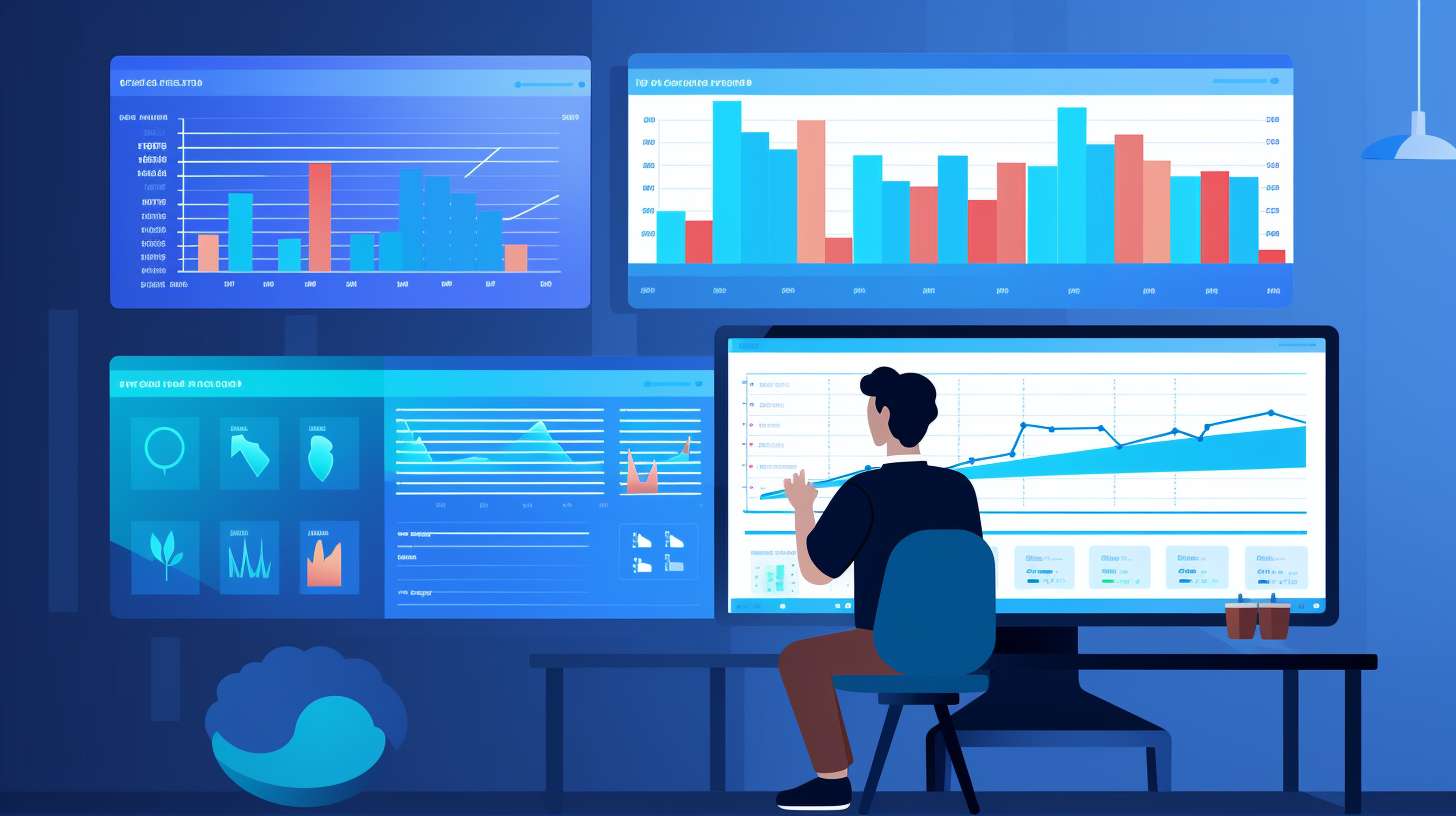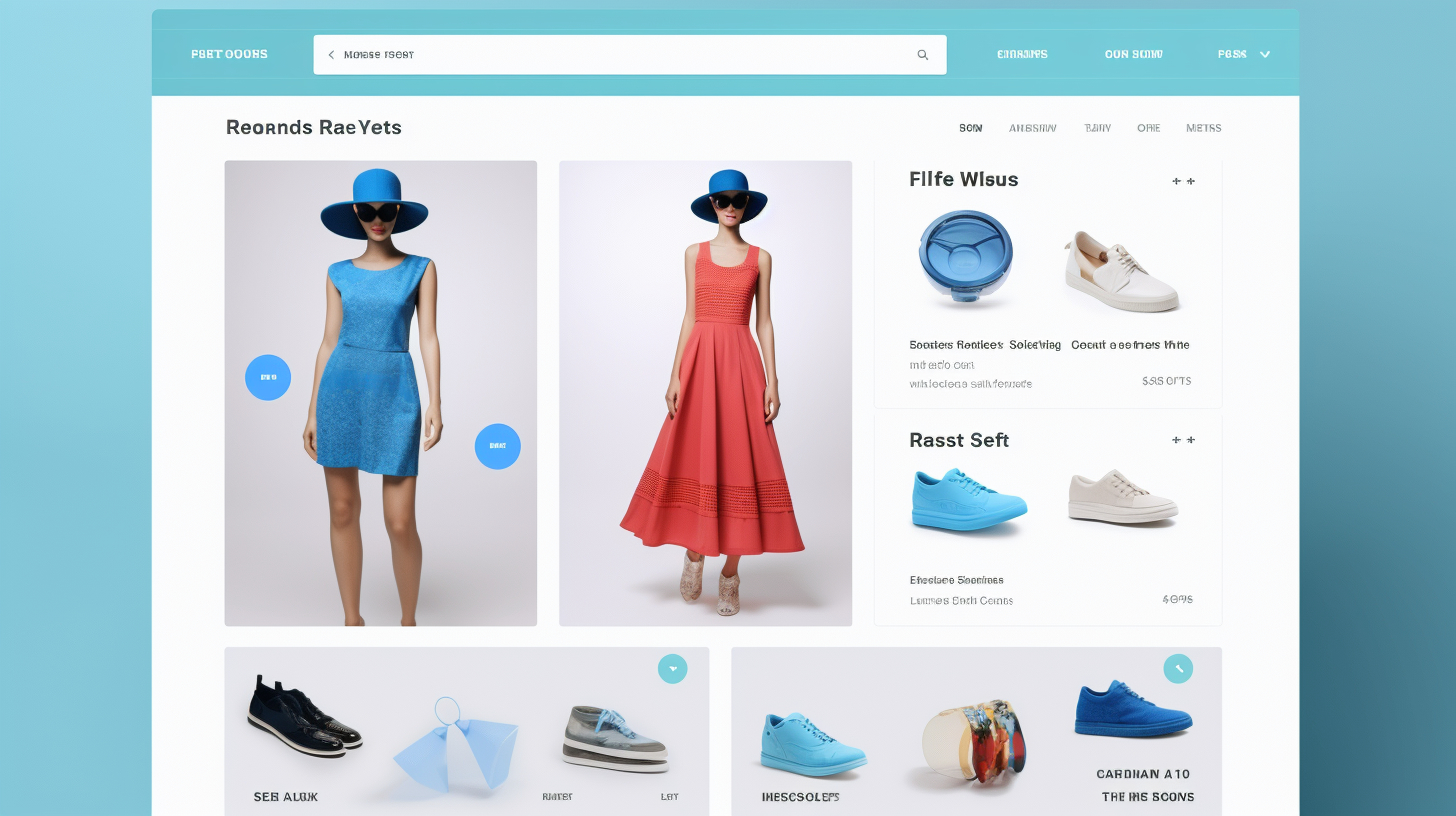歡迎來到專業 WordPress 網站創建和維護的世界!在本文中,我們將探討創建和管理 WordPress 網站的最佳實踐,該網站不僅外觀精美,而且性能最佳。
WordPress 已成為全球最受歡迎的內容管理系統 (CMS) 之一,為約 40% 的網站提供支援。它的多功能性、用戶友好的介面以及豐富的插件和主題選項使其成為個人、企業和組織的首選。
無論您是經驗豐富的開發人員還是剛起步,實施這些最佳實踐將確保您的 WordPress 網站不僅符合行業標準,而且還在競爭中脫穎而出。那麼,讓我們深入研究如何建立和維護一個專業的 WordPress 網站,以提供卓越的使用者體驗並實現您的業務目標。
建立品牌設計標準
當要打造引人注目的線上形象時,擁有一個有凝聚力的品牌設計至關重要。您的網站通常是潛在客戶的第一個接觸點,您希望給他們留下積極而持久的印象。透過建立品牌設計標準,您可以確保網站的每個方面都反映您的品牌標識和價值觀。
有凝聚力的網站設計
品牌設計標準的關鍵組成部分是創建一個有凝聚力的網站設計。這意味著您網站上的每個頁面都應具有一致的外觀和感覺,從配色方案到字體。以下有一些技巧可幫助您實現具有凝聚力的網站設計:
- 定義您的品牌識別: 在開始設計網站之前,清晰了解您的品牌識別非常重要。您的品牌價值是什麼?你的目標受眾是誰?透過定義這些元素,您可以創建與您的品牌相符的設計。
- 選擇顏色方案: 顏色在品牌塑造中起著至關重要的作用。選擇能夠代表您的品牌個性並引起目標受眾共鳴的調色板。在整個網站中一致使用這些顏色以創造視覺和諧。
- 創建徽標: 您的標誌就是您的品牌的臉。它應該是獨特的、令人難忘的、並且具有視覺吸引力。將您的標誌融入您的網站設計,以增強品牌認知度並創造具有凝聚力的視覺體驗。
- 選擇正確的字體: 字體設計為您的網站定下了基調。選擇可讀性強、能體現品牌個性、且能良好協同的字體。堅持使用有限數量的字體(通常為兩種或三種)以保持乾淨一致的外觀。
- 設計一個使用者友善的佈局: 您的網站佈局應該直觀且易於瀏覽。考慮資訊流、元素的放置和整體結構。精心設計的佈局可以增強使用者體驗並鼓勵訪客進一步探索您的網站。
- 針對行動裝置進行最佳化: 在當今以行動為中心的世界裡,擁有一個在所有裝置上都看起來很棒的響應式網站至關重要。確保您的設計能夠無縫適應不同的螢幕尺寸並保持跨平台的一致性。
請記住,一致性是品牌設計標準的關鍵。透過創建具有凝聚力的網站設計,您可以建立強大且令人難忘的品牌形象,從而引起目標受眾的共鳴。
當您著手創建或改造您的 WordPress 網站時,請花時間建立品牌設計標準。透過讓您的網站設計與您的品牌標誌保持一致,您將創造出具有視覺吸引力且專業的線上形象,讓您在競爭中脫穎而出。
優化速度
在當今快節奏的數位世界中,速度就是一切。無論是瀏覽網路、觀看串流影片或線上購物,使用者都期望獲得快速、無縫的體驗。網站載入緩慢不僅會讓用戶感到沮喪,還會對搜尋引擎排名產生負面影響。那麼,如何優化網站速度並提高使用者體驗和 SEO 排名呢?讓我們來一探究竟。
提高用戶體驗和 SEO 排名
快速加載的網站不僅能讓用戶滿意,還能向搜尋引擎發送正面的訊號。當談到 SEO 時,網站速度已經成為一個至關重要的排名因素。據谷歌稱,行動頁面載入時間延遲一秒鐘可能會對轉換率產生高達 20% 的影響。訪客更有可能離開加載緩慢的網站並直接轉向您的競爭對手的網站。
因此,顯然優化網站速度至關重要。以下有一些策略可幫助您實現更快的網站速度:
- 選擇可靠的託管服務提供者:提供高效能伺服器資源的可靠託管服務提供者是快速網站的基礎。尋找專門從事 WordPress 託管並擁有優化伺服器以實現最大速度的提供者。
- 優化您的影像:圖像通常是網頁上最大的文件,因此對其進行最佳化可以大大提高網站速度。在不犧牲品質的情況下壓縮圖像,並考慮延遲加載,即僅在用戶向下滾動頁面時加載圖像。
- 最小化並合併文件:壓縮是指從 CSS 和 JavaScript 檔案中刪除不必要的字元和空格的過程。將這些檔案合併為一個檔案可減少 HTTP 請求的數量,從而加快載入時間。
- 啟用快取:快取會保存您網站頁面的副本並將其提供給用戶,而不會向伺服器產生新的請求。這大大減少了伺服器的負載並縮短了頁面載入時間。您可以使用 W3 Total Cache 或 WP Super Cache 等 WordPress 外掛程式來啟用快取。
- 最佳化程式碼:乾淨且優化的程式碼對於快速的網站至關重要。刪除任何不必要的外掛程式或主題,因為它們會降低您的網站速度。定期更新您的 WordPress 安裝和插件,以確保您擁有最新的效能增強和安全性修補程式。
請記住,快速的網站不僅可以改善用戶體驗,還可以提高您的 SEO 排名。透過優化 WordPress 網站的速度,您可以為訪客提供更好的瀏覽體驗,同時在搜尋引擎結果中保持領先於競爭對手。
因此,立即採取必要的步驟來優化您的網站速度,並獲得改善的用戶體驗和更高的 SEO 排名的回報!
響應式設計
適應不同的螢幕尺寸和設備
在當今的數位世界中,網站能夠適應用戶可能使用的多種螢幕尺寸和設備至關重要。隨著行動裝置的快速發展,響應式設計對於任何網站來說已經成為必需品而非奢侈品。
響應式設計為何如此重要?
- 提供無縫的使用者體驗:響應式網站可確保您的內容在各種裝置(例如桌上型電腦、筆記型電腦、平板電腦和智慧型手機)上正確且最佳地顯示。無論用戶使用什麼設備,他們都能夠輕鬆瀏覽並與您的網站互動。
- 接觸更廣泛的受眾:隨著越來越多的人透過行動裝置存取互聯網,響應式設計可以讓您滿足更廣泛的受眾的需求。透過在各個裝置上提供出色的使用者體驗,您可以增加吸引和留住訪客的機會。
- 提高搜尋引擎排名:響應式設計是搜尋引擎對網站進行排名時考慮的重要因素。例如,Google在其搜尋結果中優先考慮適合行動裝置的網站,青睞那些提供更好用戶體驗的網站。
響應式設計如何運作?
響應式設計使用 CSS 媒體查詢來偵測使用者的螢幕尺寸並相應地調整網站的佈局和元素。它確保網站的內容、圖像和導航能夠適當顯示,無論螢幕是大還是小。
響應式設計的關鍵特性之一是流體網格。響應式設計的網站不使用固定寬度的佈局,而是使用可適應螢幕尺寸的靈活網格。這使得不同設備之間的體驗更加流暢和無縫。
響應式設計有什麼好處?
- 一致的品牌:響應式設計可確保您的網站在不同裝置上保持一致的外觀和感覺,從而強化您的品牌形象。用戶會欣賞視覺的一致性並更有可能信任您的品牌。
- 提高載入速度:響應式設計消除了對單獨行動版本的需求,從而優化了網站的載入速度。用戶無需等待您網站的不同版本加載,從而獲得更快、更流暢的體驗。
- 更容易維護:透過響應式設計,您只需維護一個網站,而不需要為不同的裝置維護多個版本。這使得更新和更改變得更加簡單和高效。
- 經濟高效:雖然開發響應式網站可能需要一些初始投資,但從長遠來看,它可以為您節省金錢。您無需投資單獨的行動版本或花費額外的資源來維護多個網站。
結論
在當今的行動驅動世界中,確保您的網站具有響應式設計對於其成功至關重要。它不僅提供無縫的用戶體驗,還可以幫助您接觸更廣泛的受眾,提高您的搜尋引擎排名,並保持一致的品牌形象。因此,不要忽視響應式設計的重要性——確保您的網站能夠適應不同的螢幕尺寸和裝置。
保持 WordPress 更新
WordPress 是當今最受歡迎且使用者友好的內容管理系統 (CMS) 之一。它為數百萬個網站提供支持,並不斷發展以滿足用戶的需求。但是,與任何軟體一樣,WordPress 需要定期更新以確保最佳效能和安全性。
安全性和性能
定期更新您的 WordPress 安裝、主題和外掛程式對於維護您網站的安全性和效能至關重要。原因如下:
- 安全:WordPress 開發社群發布的每個更新都會解決已知的安全漏洞並提供修復程序,以保護您的網站免受潛在威脅。透過保持 WordPress 安裝為最新版本,您可以確保使用最新的安全性修補程式和保障措施。
- 表現:更新不僅解決安全性問題,而且通常還包括效能改進。隨著 WordPress 的發展,開發人員找到了優化程式碼並提高 CMS 整體速度和效率的方法。透過更新您的 WordPress 版本,您可以利用這些改進來確保您的網站發揮最佳效能。
- 相容性:外掛程式和主題是 WordPress 網站的重要組成部分,使您能夠添加功能並自訂網站的外觀。然而,隨著時間的推移,這些外掛程式和主題可能會變得過時或不再與最新版本的 WordPress 相容。透過定期更新您的 WordPress 安裝和相關主題和插件,您可以確保相容性並防止可能導致網站停機或功能問題的潛在衝突。
雖然定期更新 WordPress 網站看似困難,但其好處遠大於不便。 WordPress 透過其內建的更新功能簡化了更新過程,讓您的網站輕鬆保持最新狀態。
請記住,忽略更新您的 WordPress 安裝、主題和外掛程式可能會導致您的網站容易受到安全威脅並對其效能產生負面影響。保持最新更新以確保您的網站安全、優化且順暢運作。您的網站及其訪客將會感謝您!
附加資訊:定期更新您的 WordPress 安裝、主題和插件,以確保應用最新的安全性修補程式。 在此處的官方文件中了解有關更新 WordPress 的更多信息.
優先考慮使用者體驗
在快節奏的網頁設計世界中,一個永遠不應忽略的因素就是使用者體驗 (UX)。一個網站可以有令人驚嘆的視覺效果,但如果它不能為訪客提供愉快和無縫的體驗,它就無法給人留下持久的印象。那麼,如何確保您的網站優先考慮使用者體驗?讓我們來探索一些關鍵策略:
遵循設計趨勢
設計趨勢來來去去,但不變的是以使用者為中心的理念。透過跟上最新的設計趨勢,您可以確保您的網站保持現代性和相關性,同時仍優先考慮目標受眾的需求和偏好。以下是一些可以增強使用者體驗的設計趨勢:
- 極簡主義:簡約設計著重簡潔、乾淨的線條和充足的空白。透過整理您的網站並專注於基本元素,您可以創建一個更直觀和用戶友好的介面。
- 響應式設計:隨著行動裝置的使用越來越多,響應式設計已成為必需品。確保您的網站能夠在各種螢幕尺寸和裝置上無縫運行,這將增強用戶體驗並保持訪客的參與度。
- 微互動:微互動是微妙的動畫或視覺提示,當使用者在您的網站上執行某些操作(例如將滑鼠懸停在按鈕上或向下滾動頁面)時向使用者提供回饋。這些小小的互動可以大大提高用戶參與度和滿意度。
視覺上吸引人又引人入勝
雖然功能性和可用性至關重要,但美學在創造令人難忘的使用者體驗方面也發揮著重要作用。具有視覺吸引力的網站可以吸引訪客,鼓勵他們停留更長時間,並最終將他們轉變為忠實客戶。以下是一些使您的網站具有視覺吸引力和吸引力的策略:
- 策略性地使用顏色:色彩心理學在影響使用者行為和情緒方面起著至關重要的作用。選擇與您的品牌識別相符且能喚起目標受眾所需情感的配色方案。使用對比色突出重要元素並保持視覺層次。
- 引人注目的視覺效果:高品質的圖像、影片和圖形可以顯著增強您網站的視覺吸引力。使用引人注目的視覺效果來引起目標受眾的共鳴並有效地傳達您的訊息。
- 明確的行動號召:精心設計的號召性用語 (CTA) 按鈕可以引導使用者無縫完成您網站上的旅程。確保它從其他內容中脫穎而出,並清楚地傳達您希望用戶採取的行動。
優先考慮使用者體驗應該是每個網頁設計專案的核心。透過遵循當前的設計趨勢並創建具有視覺吸引力和吸引力的網站,您可以確保您的用戶獲得積極的體驗,並讓他們再次回來。因此,花點時間了解您的目標受眾,實施以使用者為中心的設計原則,並觀察您的網站蓬勃發展。
可靠的託管和 SSL 證書
在當今數位時代,安全應該是任何網站所有者的首要任務。確保您的網站及其處理的資料安全的重要步驟之一是選擇可靠的託管服務提供者並安裝 SSL 憑證以確保安全的資料傳輸。
安全資料傳輸
當在您的網站和其用戶之間傳輸資料時,您希望確保這些資訊保持機密並免受任何潛在威脅。這時 SSL 憑證就發揮作用了。
SSL 憑證是安全通訊端層的縮寫,是一種對網站和訪客之間傳輸的資料進行加密的數位憑證。這種加密會對資料進行打亂,使得未經授權的人幾乎不可能攔截或讀取資料。以下是安全資料傳輸時需要考慮的一些要點:
- 加密:SSL 憑證使用加密演算法來保護資料傳輸。這意味著即使有人設法攔截數據,如果沒有加密金鑰,他們也無法解密其內容。
- 信任和信譽:在您的網站上安裝 SSL 憑證可以為您的使用者提供額外的信任和可信度。這表明您非常重視他們的安全,並可以增加他們與您的網站分享敏感資訊的信心。
- SEO優勢:像 Google 這樣的搜尋引擎會優先考慮安裝了 SSL 憑證的網站。他們將網站安全性視為排名因素,使得啟用 SSL 的網站在搜尋引擎結果頁面 (SERP) 上略有優勢。
- 防範網路釣魚攻擊:SSL 憑證有助於保護您的網站免受網路釣魚攻擊,駭客會試圖冒充您的網站來獲取敏感使用者資訊。有了有效的 SSL 證書,這些攻擊者欺騙您的用戶就會變得更加困難。
在選擇託管服務提供者時,必須確保他們提供可靠的安全功能,包括 SSL 憑證支援。以下是一些需要考慮的因素:
- SSL 憑證可用性:檢查託管服務提供者是否提供對 SSL 憑證的支持,以及是否提供一種簡單的安裝和管理憑證的方法。
- 安全措施:尋找具有強大安全措施的託管服務供應商,例如防火牆、入侵偵測系統和定期安全更新。
- 24/7 監控:確保託管服務提供者有專門的團隊監控伺服器和網絡,以防任何潛在的安全威脅。
- 客戶支援:選擇提供優質客戶支援的託管服務供應商,這樣您就可以快速解決可能出現的任何與安全相關的問題。
請記住,投資可靠的託管服務提供者並安裝 SSL 憑證對於保護您的網站和確保安全的資料傳輸至關重要。採取主動措施保護您的網站比處理安全漏洞的後果好得多。因此,請明智選擇並優先考慮您的網站及其用戶的安全。
考慮目標受眾
在設計網站時,必須考慮目標受眾及其特定需求。您的網站應該用戶友好、視覺上有吸引力,並提供符合受眾興趣的有價值的資訊或服務。透過了解您的受眾是誰以及他們對網站的期望,您可以創建一個有效吸引訪客並將其轉化為客戶的設計。
設計時充分考慮受眾需求
為了確保您的網站符合目標受眾的需求,在設計過程中需要牢記以下幾個關鍵因素:
- 使用者體驗(UX): 優先創造無縫且直覺的使用者體驗。考慮網站的導航、佈局和整體流程,以便使用者輕鬆找到他們想要的內容。融入使用者友善的功能,例如清晰的行動號召按鈕和適應不同螢幕尺寸的響應式設計。
- 視覺吸引力: 您的網站設計應該具有視覺吸引力並與您的品牌形像一致。使用能引起目標受眾共鳴的顏色、字體和圖像。具有視覺吸引力的網站可以創造積極的第一印象並鼓勵用戶進一步探索。
- 內容相關性: 客製化您的網站內容以滿足目標受眾的特定需求和興趣。進行徹底的研究以了解他們的痛點、偏好以及他們正在尋求的資訊。精心製作引人入勝且資訊豐富的內容來滿足這些需求並將您的品牌定位為行業權威。
- 移動優化: 隨著行動裝置使用量的顯著增加,針對行動裝置優化您的網站至關重要。確保您的網站具有響應能力,這意味著它可以無縫調整以適應不同的螢幕尺寸,確保在不同裝置上獲得一致且用戶友好的體驗。
- 頁面載入速度: 加載緩慢的網站會讓用戶感到沮喪,並導致他們在進一步瀏覽之前離開。透過優化圖片大小、最小化程式碼和利用快取技術來優化網站速度。快速載入的網站不僅可以改善用戶體驗,還會影響您的搜尋引擎排名。
- 清晰的訊息: 向您的受眾清楚傳達您的品牌的價值主張和關鍵訊息。使用簡潔引人注目的標題、要點和副標題有效地傳達訊息。確保您的網站內容易於掃描和理解,因為使用者通常會瀏覽網頁。
透過在設計網站時考慮目標受眾的需求,您可以創建引人入勝且引人入勝的線上形象,從而推動轉換並培養長期的客戶關係。請記住,您的網站應該作為您品牌的數位延伸,並成為您的受眾的寶貴資源。
內部連結: 要了解有關響應式設計的重要性的更多信息,請閱讀我們的文章 響應式設計為何如此重要.
值得信賴的外掛和主題
在建立安全網站時,您可以採取的第一步是選擇和使用可信賴的外掛程式和主題。由於可供選擇的選項多種多樣,決定在您的網站上安裝哪一個可能會很困難。但是,花時間研究並選擇信譽良好的外掛程式和主題,您可以顯著增強網站的安全性。
維護網站安全
以下是透過使用可信任外掛程式和主題維護網站安全時需要考慮的一些關鍵點:
- 研究與評論: 在安裝外掛程式或主題之前,請花時間研究並閱讀其他用戶的評論。尋找下載量高、評價好、定期更新的外掛和主題。使用者回饋可以為外掛程式或主題的功能和安全性提供寶貴的見解。
- 相容性和更新: 確保您選擇的外掛程式和主題與您的網站平台相容,無論是 WordPress、Joomla 還是其他內容管理系統 (CMS)。此外,定期檢查和更新您的外掛程式和主題,以從最新的安全性修補程式和錯誤修復中受益。過時的外掛程式和主題可能會讓您的網站容易受到攻擊。
- 可靠來源: 僅從可信賴來源下載外掛程式和主題。堅持使用 CMS 的官方插件和主題目錄以及信譽良好的市場和開發商。避免從第三方網站或不可靠的來源下載,因為這些可能包含隱藏的惡意軟體或惡意程式碼。
- 漏洞監控: 注意您安裝的外掛程式和主題的安全性。訂閱來自開發人員或相關安全社群的安全警報和更新。這將幫助您隨時了解任何報告的漏洞並確保您可以立即採取行動解決它們。
遵循這些做法,您可以降低安全漏洞的風險並加強您的網站抵禦潛在威脅。請記住,安全性是一個持續的過程,因此定期檢查和更新您的外掛程式和主題對於維護網站的安全性至關重要。
附加資訊: 使用可信賴的外掛程式和主題,並定期審查和更新以維護網站安全。
定期備份
作為資料保護和災難復原的重要方面,定期備份對於各種規模的企業至關重要。無論您是小型新創公司還是大型公司,確保資料的安全性和可用性都至關重要。定期備份可保護您的訊息,並在資料遺失或系統故障時輕鬆恢復,讓您安心無憂。
以下是定期備份至關重要的幾個主要原因:
- 防止資料遺失: 定期備份資料有助於防止寶貴資訊的遺失。意外刪除、硬體故障、自然災害或網路攻擊都可能導致資料遺失。透過定期備份,您可以單獨儲存資料的副本,確保即使一個系統發生故障,您的資訊仍然是安全的。
- 防範勒索軟體: 隨著勒索軟體攻擊的興起,駭客劫持資料直到支付贖金,定期備份可以起到救命的作用。透過最近的備份,您可以輕鬆恢復系統和數據,而不會屈服於網路犯罪分子的要求。
- 更快的恢復: 在資料遺失事件中,時間至關重要。定期備份資料可以加快恢復速度。您無需從頭開始,而是可以快速有效地將系統恢復到以前的狀態,從而最大限度地減少停機時間並實現業務連續性。
- 合規性和法律要求: 許多行業對於資料保留和保護都有特定的合規性和法律要求。定期備份有助於履行這些義務,確保資料安全儲存並可在需要時存取。
為了有效地管理和維護定期備份,請考慮以下最佳做法:
- 根據資料的關鍵性及其變化率來決定備份頻率。
- 利用可靠的備份解決方案來自動化流程,以確保一致性和可靠性。
- 將備份儲存在單獨的裝置或異地位置,以防止物理損壞或盜竊。
- 定期測試復原過程以驗證備份的完整性和有效性。
- 制定符合您的業務營運和資料需求的備份計畫。
請記住,定期備份不僅可以保護您的寶貴訊息,還可以讓您安心,並有助於確保您的企業能夠順利從任何不可預見的事件中恢復。不要等到為時已晚-今天就開始實施定期備份策略!
備份數據 並保護您的業務免遭資料遺失。
WordPress 管理工具
管理 WordPress 網站可能是一項複雜的任務,尤其是當您的網站規模和受歡迎程度不斷增長時。幸運的是,有幾種 WordPress 管理工具可用於簡化流程並確保順利運作。從監控效能到簡化更新,這些工具對於維護專業的 WordPress 網站非常有價值。讓我們探索一些頂級工具及其優點:
1. WordPress.com 的 Jetpack
Jetpack 是一款功能強大的一體化插件,提供一系列網站管理所需的基本功能。它提供即時備份、安全掃描和垃圾郵件防護,確保您的網站安全無虞。此外,Jetpack 還提供分析和行銷工具,幫助您追蹤訪客統計數據並優化您的網站以獲得更好的效能。
2. ManageWP
ManageWP 是一個綜合管理平台,可讓您從單一儀表板處理多個 WordPress 網站。它透過提供一個集中平台來安裝主題、外掛程式和 WordPress 核心的更新,從而簡化了網站更新。使用 ManageWP,您還可以安排自動備份並監控網站效能,確保您的網站始終順利運作。
3. MainWP
MainWP 是另一個用於管理多個 WordPress 網站的熱門工具。它提供了一個用戶友好的介面,可同時更新所有網站上的主題、外掛程式和 WordPress 核心。 MainWP 還提供強大的安全功能,包括惡意軟體掃描和活動日誌記錄,以保護您的網站免受潛在威脅。
4. UpdraftPlus
定期備份對於您網站的安全性和完整性至關重要。 UpdraftPlus 是一款頂級備份插件,可讓您安排自動備份並將其儲存在各種位置,包括 Dropbox 和 Google Drive 等雲端儲存平台。使用 UpdraftPlus,您可以在資料遺失或發生其他緊急情況時輕鬆恢復您的網站。
5. Yoast SEO
搜尋引擎優化 (SEO) 對於提高您的網站在搜尋引擎結果中的可見度至關重要。 Yoast SEO 是一款受歡迎的插件,可以幫助您優化搜尋引擎的內容。它為改善您網站的 SEO 提供了寶貴的見解和建議,包括優化元標題、描述和關鍵字使用。
這些只是眾多可用的 WordPress 管理工具中的幾個範例。根據您特定的網站需求,您可以探索更多選項來找到完美的工具組合,幫助您有效地管理和維護專業的 WordPress 網站。
常見問題解答
- 創建專業 WordPress 網站的最佳實踐是什麼?
創建專業 WordPress 網站的一些最佳實踐包括:1. 選擇可靠的託管服務提供商,2. 選擇專業的 WordPress 主題,3. 優化網站速度和性能,4. 使用高品質和優化的圖像,5. 實施適當的網站安全措施。
- 專業的網站是否有必要使用專業的WordPress主題?
雖然這不是必需的,但使用專業的 WordPress 主題可以大大增強您網站的外觀、功能和使用者體驗。專業主題通常具有高級功能、自訂選項和行動響應能力,可以展示您的專業性並提高您網站的可信度。
- 如何優化我的 WordPress 網站的速度和效能?
要優化 WordPress 網站的速度和效能,您可以:1. 使用快取插件,2. 優化圖像並使用延遲加載,3. 最小化並合併 CSS 和 JavaScript 文件,4. 啟用瀏覽器緩存,以及 5. 選擇伺服器響應時間快速的可靠託管服務提供者。
- 我應該為我的專業 WordPress 網站實施哪些安全措施?
為您的專業 WordPress 網站實施一些重要的安全措施:1. 保持 WordPress 和插件更新,2. 使用強大而獨特的密碼,3. 安裝安全插件,4. 定期備份您的網站,5. 限制登入嘗試並防止暴力攻擊。
- 我不需要任何程式設計知識就可以建立專業的 WordPress 網站嗎?
是的,您可以使用拖放頁面建立器和預先設計的範本來建立專業的 WordPress 網站,無需任何編碼知識。 WordPress 提供使用者友善的介面和大量的外掛程式和主題,讓您可以輕鬆自訂和建立專業的網站。



















